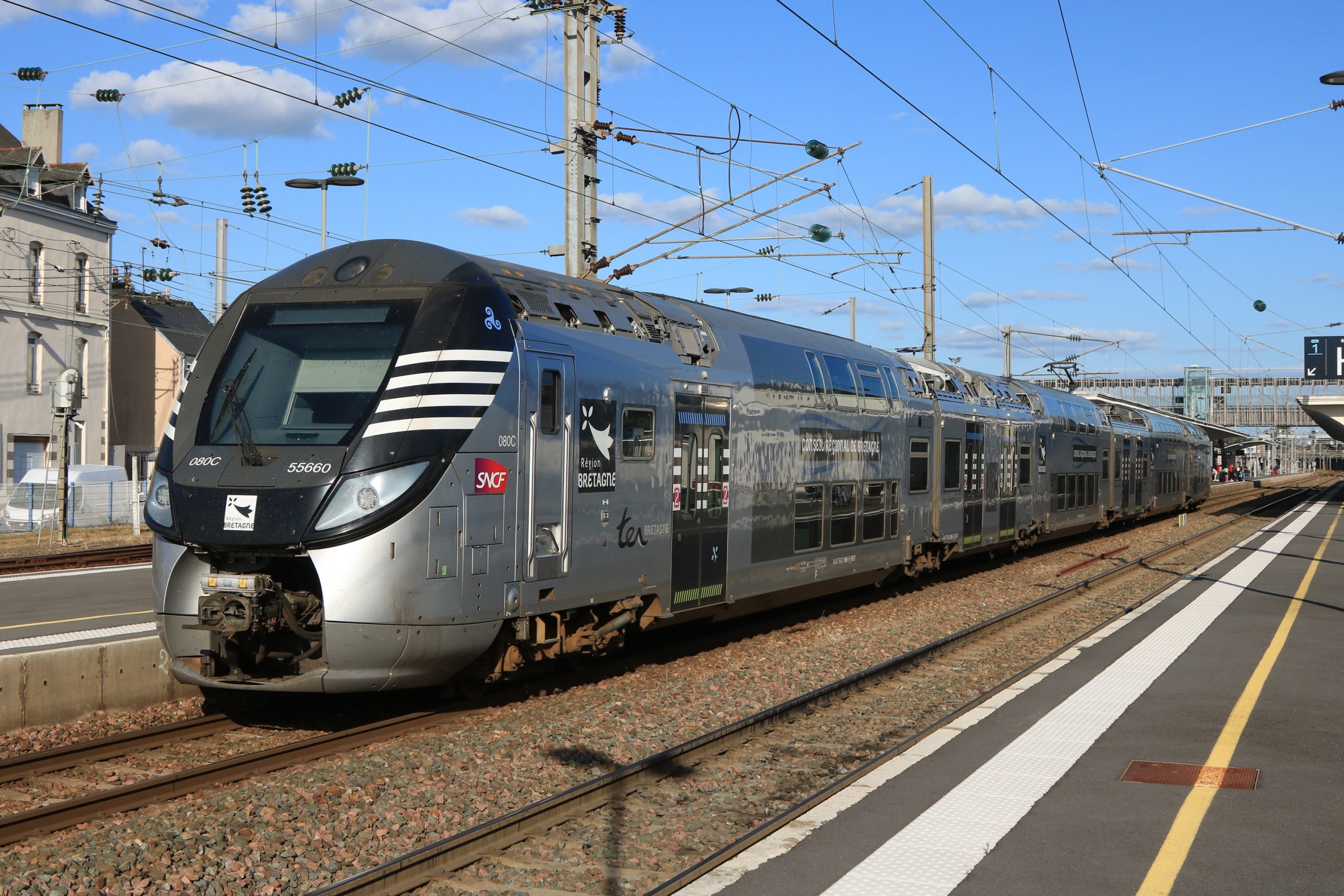Trains made with recyclable parts
The Destiny project proposes a new process to manufacture parts for the railway and aeronautical industries. It uses a thermoplastic resin, which enables the materials to be recycled while limiting the pollution associated with manufacturing them.
It is increasingly critical to be able to recycle products so as to lower the environmental cost of their production. The composite parts used in the railway sector have a service life of roughly 30 years and it is difficult and expensive to recycle them. They are mostly made from thermosetting resins — meaning they harden as the result of a chemical reaction that starts during the molding process. Once they have reached a solid state, they cannot be melted again. This means that if the parts cannot be repaired, they are destroyed.
The Destiny project brings together several industrial and academic partners[1] to respond to this need. “The goal is to be able to migrate towards recyclable materials in the railway and aeronautical industries,” says David Cnockaert, head of the project at Stratiforme Industries, a company that specializes in composite materials. Destiny won an Innovation Award at JEC World 2020 for two demonstrators made from recyclable composite materials: a regional train cabin and a railway access door.
A resin that can be melted
“An easy solution would be to use metal, which is easy to recycle,” says David Cnockaert “but we also have to take into account the requirements for this sector in terms of mass, design, thermal and acoustic aspects.” The purpose of the Destiny project is to develop a solution that can easily be tailored to current products by improving their environmental qualities . The materials used for reference parts in the railway industry are composites, made with a resin and fiber glass or carbon fiber. During the stratification stage, these fibers are impregnated with resin to form composite materials.
“In the Destiny project, we’re developing thermoplastic resins to create these parts,” says Eric Lafranche, a researcher at IMT Lille Douai who is involved in the Destiny project. Unlike thermosetting resins, thermoplastic resins develop plasticity at very high temperatures, and change from a solid to a viscous state. This means that if a train part is too damaged to be repaired, it can be reprocessed so that the recyclates can be reused.
The resin is produced by Arkema in a liquid form, with very low viscosity. “A consistency close to that of water is required to impregnate the fiberglass or carbon fibers during polymerization,” explains Eric Lafranche. “Polymerization takes place directly in the mold and this process allows us to avoid using certain components, namely those that release volatile organic compounds (VOC),” he adds. The production of VOC is therefore greatly limited in comparison with other resins. “People who work in proximity to these VOCs have protective equipment but they are still a source of pollution, so it’s better to be able to limit them,” says Eric Lafranche.
Read more on I’MTech: What is a Volatile Organic Compound (VOC)?
Tailored innovation
This thermoplastic resin provides properties that are virtually equivalent to thermosetting resins, “or even better resilience to shocks,” adds the researcher. In theory, this resin can be recycled infinitely. “In practice, it’s a bit more complicated – it can lose certain properties after being recycled repeatedly,” admits the researcher. “But these are minimal losses and we can mix this recycled material with pure material to ensure equivalent properties,” he explains.
The aim of the project is to be able to offer manufacturers recyclable materials while limiting the pollution associated with their production, but to do so by offering parts that are interchangeable with current ones. “The entire purpose of the project is to provide manufacturers with a solution that is easily accessible, which may therefore be easily tailored to current production lines,” says David Cnockaert. This means that the recyclable parts must comply with the same specifications as their thermosetting counterparts in order to be installed. This solution could also be adapted to other industries in the future. “We could consider applications in the energy, defense or medical industries, for example, for which we also manufacture composite parts,” concludes David Cnockaert.
Tiphaine Claveau for I’MTech
[1] Accredited by the i-TRANS and Aerospace Valley competitiveness clusters, the Destiny FUI project brings together Stratiforme Industries, STELIA Composite, ASMA, CANOE, Crépim, ARKEMA and an ARMINES/IMT Lille Douai research team.





Leave a Reply
Want to join the discussion?Feel free to contribute!